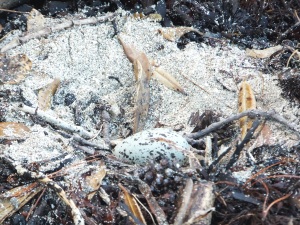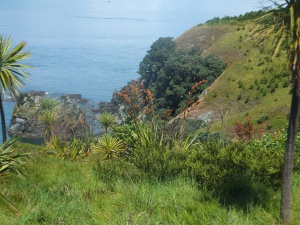Because New Zealand had no native land mammals and very few predators, several of the birds are flightless, and most are naturally friendly and inquisitive, which makes them very vulnerable to introduced predators such as dogs, stoats, rats and mice. So some species now survive in the wild only on island sanctuaries such as Tiritiri Matangi. A few, such as the Black Stilt we saw near Twizel, and the Kakapo – a very big flightless parrot – survive only with managed breeding programmes. We had a glorious sunny day on Tiritiri Matangi, and saw a good variety of native and endemic birds as well as beautiful trees and plants.

Nobody now lives on the island, though some researchers stay a short time, and tourists can stay overnight to look out for Kiwi. There are amazing views from the old lighthouse at the top of the island.

As we were there in late spring, many of the trees were coming into blossom, attracting birds for the nectar. This may look like an ordinary Wood Pigeon,but it’s a Kereru, a native pigeon, about twice the size of the introduced feral pigeons








